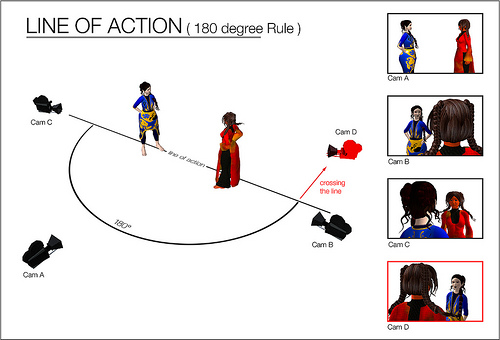In today's lesson we had a go at completing our own interpretation of Western Shootout movies. We have successfully recorded multiple shots and then assembled them into a single movie. While filming and editing I have taught myself many areas to look out for such as the editing and cinematography. I have found today's task very useful as I had a chance to experiment with Adobe Premier which I have never used before.
First of all I have tried to implement as many cinematography techniques which I have found in a Western Shootout movie into my own movie. Therefore I have used tracking shots, medium two shots, establishing shot, wide shot and POV shot. These shots do follow the codes & conventions of Western Shootout movies however a shot such as POV does not. I have implemented this by purpose as I believe that it does emphasise the tension visible in the scene, showing the characters point of view of the other bad character that she is about to face. While editing I have found a error which I have performed during my filming, which was that I have not followed the 180 degree rule. 180 degree rule is a imaginary line which we cannot cross when filming characters who are facing each other. As a result of not following this rule, the characters do not seem as if they are facing each other. By this error I have taught myself that it is essential to use the 180 degree rule while filming which could really affect my further music video task. Additionally another error which I have performed was for me to capture the establishing shot in a still position. By this the establishing shot being very still I have made it very dull. To fix this I could of used a pan in order to show more of the scene as well as capture the audiences attention.
To transition between scenes I have used very simple cuts which do follow the codes and conventions of western shootout movies. By the use of cuts I was allowed for quick transition which in fact did emphasise the tension between both characters. Additionally I could use a fast paced or slow paced cuts in order to emphasise the tension as by this the audience would feel it build up by the use of fast paced cuts, and for it to drop using slower paced cuts.
While filming, I have decided to film longer sections of each shot which then I would of cut using Adobe Premier which I have used. As a result of this I could choose which section of the filmed shot I wanted to use. This allowed me to refine and select the best sections of the shots.
To transition between scenes I have used very simple cuts which do follow the codes and conventions of western shootout movies. By the use of cuts I was allowed for quick transition which in fact did emphasise the tension between both characters. Additionally I could use a fast paced or slow paced cuts in order to emphasise the tension as by this the audience would feel it build up by the use of fast paced cuts, and for it to drop using slower paced cuts.
While filming, I have decided to film longer sections of each shot which then I would of cut using Adobe Premier which I have used. As a result of this I could choose which section of the filmed shot I wanted to use. This allowed me to refine and select the best sections of the shots.

Can you explain what the 180 degree rule is and where it is evident in your film that you haven't followed it. What problems did this give you in the edit?
ReplyDelete